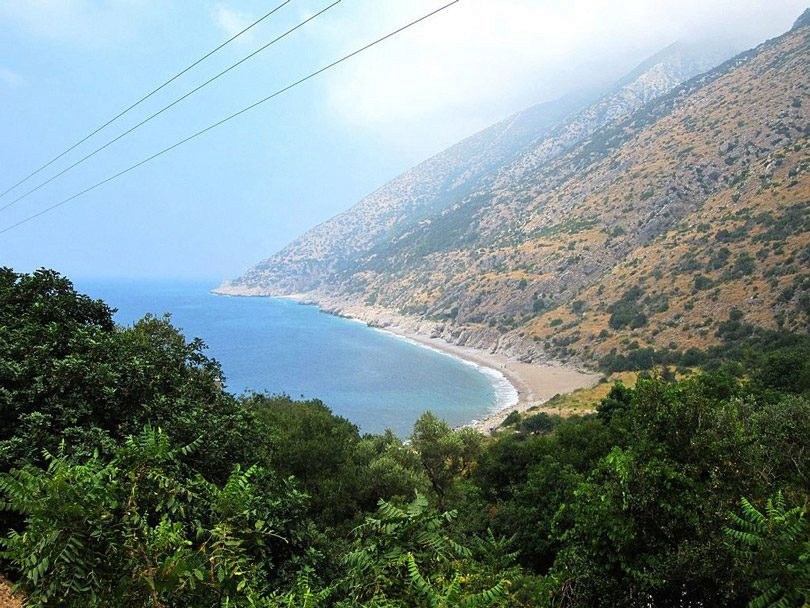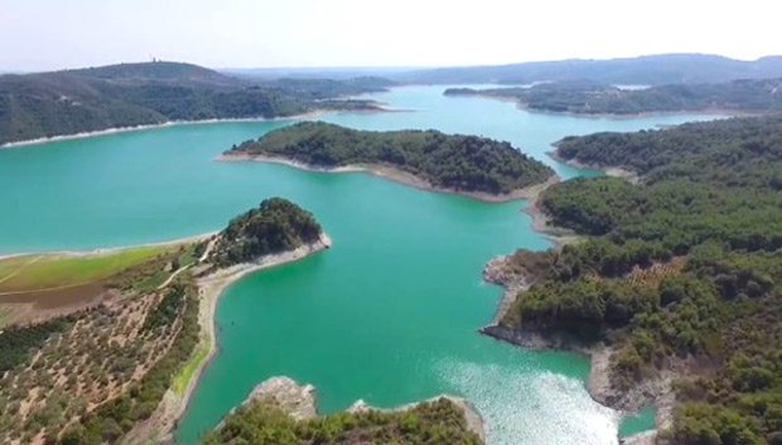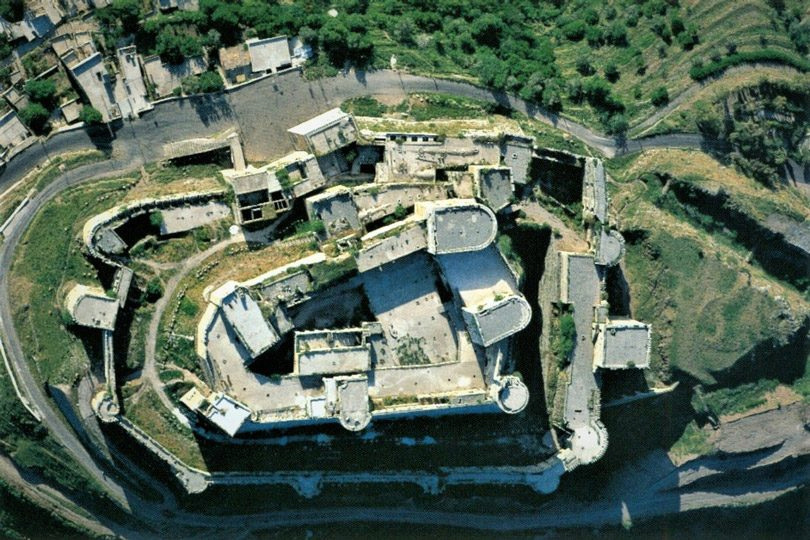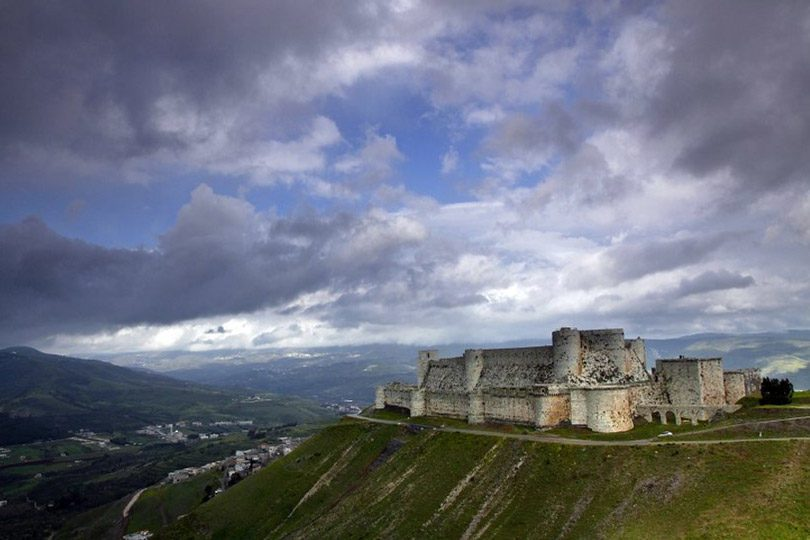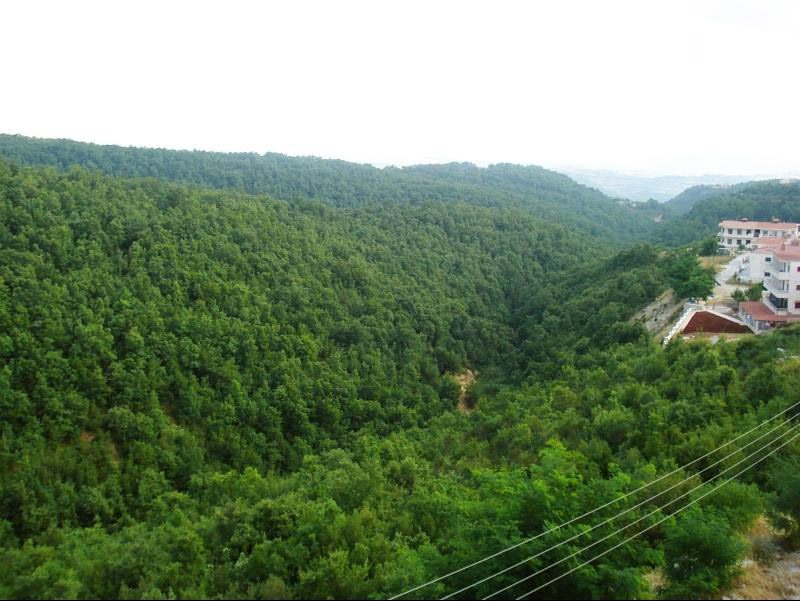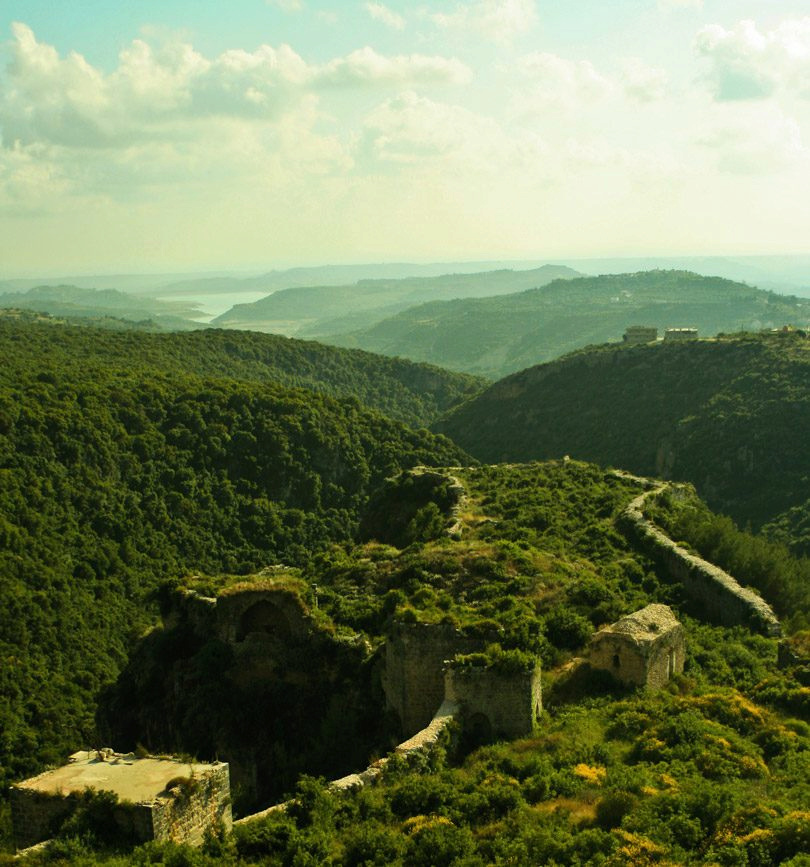12Tourist sites you should have visited in Syria
If you are Syrian or non-Syrian, there are a number of sites that you should have visited before the outbreak of the recent bloody events in the country, especially since some of these sites were subjected to significant vandalism, with which the possibility of seeing them in the form they were in until 2010 has ceased.
The Syrian Arab Republic, and its capital (Damascus), is located in the northwest of the Asian continent. It enjoys a Mediterranean climate and a highly diverse geographical environment. While deserts and deserts spread in the east of the country, green mountain ranges bordering the Syrian coast spread to the west; As well as the plains and the group of hills that lie between the coast and the Badia.
A number of rivers flow in Syria, most notably the Euphrates and the Tigris, which continue their path to Iraq, where the richest and greatest human civilizations were built on their banks, which was the reason for calling Syria the cradle of civilization.
If you are a fan of picturesque nature, heritage sites, or bustling cities where the past blends with the present, then Syria was your most suitable destination! It should only be mentioned that there are a huge number of sites worth visiting in these countries, and the sites listed below are just to mention, but not limited to:
Now here are a number of places you should have visited in Syria:
1. The city of Damascus:
Besides (Aleppo), (Damascus) is considered one of the oldest cities in the world that has been settled over four thousand years without interruption, and given the huge amount of historical and heritage buildings, and due to its long and rich history, from prehistoric to Islamic times, it chose ( UNESCO) the heart of the old city (Damascus) to be on the list of World Heritage in the year 1979.
(Damascus) has always been famous for its river (Barada), its mountain (Qasioun) and its (Ghouta), which were like green oases rich in greenery, and the waters that were the destination of Damascenes for recreation over time.
Throughout history, invaders came to (Damascus) from all sides, and the Egyptians, Persians, Greeks, Greeks, Romans, Franks, Arabs and Mongols invaded it.
The city was mentioned in the cuneiform sources dating back to the second millennium BC, and became particularly famous during the first millennium BC, as it became the center of an Aramaic kingdom.
Damascus was then subjected to Roman rule for 700 years, and during the Christian period, Caesar (Theodos) built the Cathedral (John the Baptist), which was later replaced by the Umayyad Mosque.
The Muslims arrived in (Damascus) in the year 636, and the Umayyads later chose it to be the capital of their state.
Night view of (Damascus) from Mount Qasioun.
One of the most prominent landmarks of the city is its Umayyad Mosque, where time left a clear trace in the area adjacent to the Umayyad Mosque, confirming the sanctity of this place, as it was found there by the Church of (John the Baptist); And near the mosque still remains to this day the remains of the pagan Roman temple (Jupiter), and it was said that there is a temple to the Aramaic weather god identified in this place as well.
An aerial view of the Umayyad Mosque (Damascus).
Among the indispensable landmarks to visit is also the Arab (Damascus Citadel), which was built in the thirteenth century and continued to be used as the residence of the ruler from the Ayyubid era until the Ottoman era, and the (Bimarestan) (Hospital) Al-Nuri, which was built by (Nour al-Din al-Zenki) in addition to A large number of archaeological schools, most notably (Al-Aziziya School), which includes the remains of (Saladin Al-Ayyubi).
Moreover, (Damascus) includes a distinguished palace called (Al-Azm Palace), a metaphor for its founder (Assaad Pasha Al-Azm), the ruler of (Damascus) during the eighteenth century. A small number of rooms, and it has been converted into a museum of folklore.
Azem Palace
As (Aleppo); (Damascus) is distinguished by its famous market called (Al-Hamidiyah) market, which extends from (Damascus Citadel) to the Umayyad Mosque, which was established in the year 1781.
Al-Hamidye market.
A visit to (Damascus) is not complete without seeing it from the top of its mountain (Qasioun), tasting the famous (Bakdash) ice cream, and enjoying hot Damask tea in (Al-Nawfara) coffee, or in one of the cafes of the famous (Bab Touma) neighborhood.
2. Palmyra:
Just as some enjoy spending their time on the shores of the seas or on the tops of the mountains, there are many who enjoy spending their time in the deserts, especially if these deserts include one of the oldest archaeological sites in the world such as Palmyra.
Palmyra is located 270 km northeast of the capital, Damascus, and enjoys a strategic geographic location as it constitutes an oasis on the road between the coasts of the Mediterranean and the Euphrates River.
Aerial photo of Palmyra.
Settlement in this area dates back to thousands of years BC, starting with the Stone Age, as it was mentioned as (Palmyra) as a trade center in some cuneiform texts.
During the Roman times, in the first centuries AD, Palmyra reached the height of its prosperity, and established close and good relations with Rome, as many of the current ruins date back to the first centuries AD, and perhaps its most famous queen (Zenobia), who challenged the most powerful empires of history at the time, announced the separation from Rome , and even extended its control over the neighboring areas.
The city includes a large number of monuments, most notably the Street (Columns), which is 1.2 kilometers long and leads to the Arc de Triomphe. Like any Roman city; (Palmyra) includes a theater dating back to the third century AD, and a number of temples, most notably the Temple of Bel, which dates back to the first century AD; As well as its royal tombs.
(Palmyra) is considered one of the most famous cities in history that has preserved its originality despite the adversities of time. Due to this and the world-famous Palmyra, it was chosen by UNESCO to be on the World Heritage List.
In addition to the pleasure of walking between the graves, the visitor could ride camels and wander among its palm trees, and stay up late in one of Palmyra's tents or hotels.
Another city similar to Palmyra is the city of Apamea, which is located 60 km northwest of Hama, and is characterized by its long street surrounded by Roman columns as well, which is more than 600 meters long.
3. Gain and misery:
To enjoy the beauty of the mountain and the charm of the sea, it is necessary to visit the town of (Kasab) in the far west of Syria.
The town is located between the mountains of the Syrian coast, at an altitude of 800 meters above sea level, which it overlooks. It is also characterized by permanent greenery that fills the place throughout the year, with flowing springs flowing from the heart of the mountains.
The town of (Kasab) in the far west of Syria.
mashqita
(Mashqita) is also no less magical than Kessab and is not far from it. It is also characterized by its natural lakes, evergreen trees, and clean air. It is considered one of the most famous summer resorts in Syria.
4. Al Hosn Castle:
The place will enchant you until you imagine yourself immersed in a history book summed up within the walls of an ancient fortress chosen by UNESCO to be on the World Heritage List! The beauty of the fort is not limited to the splendor of the architecture, and the excellent condition that it enjoys despite the adversities of time, but !also the charming view in the arms of nature
Aerial view of Al-Hosn Fort.
The fortress is located on a hill with a height of 700 meters, with a breathtaking view of the mountains of the Syrian coast, 60 km from the city (Homs).
The fort was built until it reached its present form through several stages that took dozens of years, starting from the second half of the eleventh century AD; Where the location of the fortress was chosen by one of the princes (Homs) because of its strategic features.
Castle.
After the Franks arrived in the region, they seized the small fort, and during the second and thirteenth centuries the fortress was greatly expanded until it fell to the Mamluk Sultan (Al-Zahir Baybars) in the year 1271.
The fort is distinguished by its solid fortifications, which include two walls, one external and the other internal, reinforced by a large number of defensive towers. It also includes a moat inside, a courtyard interspersed with a number of columns, a number of halls, and a residence for the ruler.
5. Aleppo:
(Aleppo) is considered the economic capital of Syria, where until 2010 there were a large number of various textile and industrial factories, and it was crowned the capital of Islamic culture in the year 2006. And Arab houses, as well as a huge number of mosques, heritage churches, and old hospitals dating back to different historical periods.
Entrance to the Citadel (Aleppo).
In addition, there are a number of heritage baths in (Aleppo) in which bathing takes place in the traditional Aleppo manner, using laurel soap, and rubbing bags, as the people of (Aleppo) call them; One of the most famous baths is the traditional (Yalbugha) bath, and there are a number of (bimaristans) - hospitals - most notably (the Argonian bimaristan), which dates back to the Mamluk era.
An aerial view of the Citadel of Aleppo with the old city.
The city also includes a number of khans that are still used for commercial purposes to this day, such as Khan (Al-Shouna) and Khan (Al-Wazir). If you want to buy traditional gifts, you should go to the city's heritage market, which is the longest covered market in the world, where you enjoy buying wood boxes, or laurel soap (Aleppo) and its spices.
It is worth noting that UNESCO chose the ancient (Aleppo) and the citadel to be on the list of World Heritage as well.
6. Arwad Island:
About 4 kilometers southwest of the city of Tartus is the island known as Arwad.
This island was known since the second millennium BC as (Arudu), as it played an important role on the road between Egypt and (Assyria), and later was an important Phoenician port on the Syrian coast, while during Greek times it was known as (Arado).
Access to the island is available by riding wooden boats that depart from the city of Tartus to the island from time to time, where the
journey takes about a quarter of an hour.
Aerial view of Arwad Island
There are so many sights worth visiting on this small island! In addition to the pleasure of walking in its alleys and visiting its traditional shops, you can taste its seafood, or boiled beans with !cumin
One of the most prominent features of the city is the seaport that surrounds the island from the eastern side, in addition to the fortress that dates back to the second and thirteenth centuries AD, and it currently houses a museum. The ancient wall on the western side of the island.
You can read a more extensive article about Arwad Island and its history from here .
7. Bosra al-Sham:
140 km south of the capital (Damascus); The remains of the city, whose stones are covered in black, and whose history is abundant and rich in history, was placed by UNESCO on the World Heritage List in 1980.
(Bosra al-Sham) played an important role in most of the historical periods, but the most prominent of what remained of it dates back to the Roman period, where its famous theater was built, which is considered one of the best preserved Roman theaters in the world, and which can accommodate more than 15,000 spectators.
An aerial photo of the Bosra al-Sham citadel and the theater.
The Roman ruins in the city are not limited to the theater, but also include many arches and columns, but the importance of the city does not only include its theater, but also goes beyond that because of the Islamic monuments it contains, perhaps the most prominent of which is the mosque (Mubarak Al Naqa), which is believed to have reached the Prophet Muhammad in one of His commercial trips to the Levant, where his she-camel landed there.
One of the most prominent features of this ancient city is its black basalt stones from the mountains of southern Syria.
8. The town of Slunfeh:
If you are a fan of nature and mild temperatures in summer, you should have visited (Slenefeh) in the hot summer months!
Slanfeh is located 50 km to the east of the coastal city of Latakia, and is about 1130 meters above sea level.
Slunfeh town.
The town is characterized by very moderate temperatures in the hot summer months, compared to the cities and towns of the Syrian interior.
9. Saladin Castle:
25 km east of (Latakia) lies one of the most famous castles in Syria, and indeed the entire world; It is (Saladin Citadel), which was also chosen by UNESCO to be on its list of World Heritage.
This impregnable fortress is located on the top of Mount Ansariga and extends longitudinally at a distance of 700 meters, and the width does not exceed 50 to 150 meters.
Citadel of Saladin.
The castle was built in several stages, starting from the Byzantine period until the era of the Crusades on the East. However, it reached the climax of its completion during the era of Ayyubid and Mamluk domination, after Salah al-Din al-Ayyubi wrested it from the hands of the Franks.
Like its counterpart (Qal'at al-Hosn); (Salah al-Din Castle) is characterized by its location on the top of a high mountain with a fantastic view of the mountains of the Syrian coast in the heart of green nature.
It is worth noting that there are several impregnable castles in Syria, including Al-Marqab Castle, which is also located on the green mountain peaks of the Syrian coast.
10. Norias of Hama:
(Hama) is gaining worldwide fame thanks to the water wheels known as “wheels”.
(Hama) today includes about seventeen norias, some of which have been restored as a tourist destination, and some of them are still working. In ancient times, norias were used to transport water from the river basin to different areas of the city, to supply it with the water needed for irrigation.
Photo: Martin Gotthard/Flickr
Among the most famous (Hama) waterwheels that are still in good condition to this day are: (Al Mamouria Noria), located near (Al-Azm Palace), which dates back to 1453 AD; And (Mohammedan waterwheel), which has a diameter of about 27 meters and was built in the year 1361.
11. Maaloula:
55 km northeast of Damascus, on the side of the Qalamoun Mountains, is the town of Maaloula.
The importance of this small town lies in the fact that it contains sites of great archaeological and religious value, in addition to its natural location, where springs and streams flow, ensuring a mild summer weather, compared to the nearby sites. Until one of the poets wrote in it: “Like a mother who embraces her newly born child, the feet of the Qalamoun Mountains, in the place of Maaloula, embrace.”
(Maaloula) includes a large number of monuments dating back to different historical periods, perhaps the most prominent of which dates back to the Byzantine period, when (Maaloula) became a center for bishops from the seventh to the eighteenth century AD.
Maaloula at night - Photo: Mohamed Haykal /Flickr
Its most famous landmark is the Mar Sarkis Monastery, which overlooks the city, which dates back to the fourth century AD, and was built on the ruins of a Roman temple; It is one of the oldest Christian monasteries in the East, and is a destination for some Christian pilgrims; In addition to (the Monastery of Mar Thekla), which is believed to be the place where she sought refuge and was buried, St. Thekla, to escape her oppression because of her belief in the teachings of the Apostle (Paul) in the first century AD.
In addition to all that has been mentioned, what gives the town of (Maaloula) world fame is the “Aramaic” language. It is one of the Semitic languages that was spoken in Syria before it was replaced by the Arabic language, where Aramaic is still the mother tongue of about 10,000 people from the town of (Maaloula) and its surroundings, and this has constituted a great attraction for many scholars of ancient languages around the world, who are looking forward To learn the ancient oriental languages.
12. Samra Village:
Finally, it may also be good to visit the village of (Al-Samra), which is one of the smallest villages in Syria at all, and the number of its houses does not exceed ten, but it gained enormous fame in the year 2010 after acting in one of the comedy series in it, and it became an important tourist destination that must be visited To enjoy the beauty of its charming nature in the heart of the mountains.
Among the other landmarks that were worth a visit, and there is no way to talk about them in detail here: (Bloudan), (Zabadani), (Mashta Al-Helda), (Al-Marqab Castle), (Al-Hira Palaces), (Mari’s ruins), and (Ugarit), (Ebla), (Sednaya), (Samaan's Castle), (Dead Cities) in northern Syria, (Qal'at Ja'bar) and many others.
source :websites








